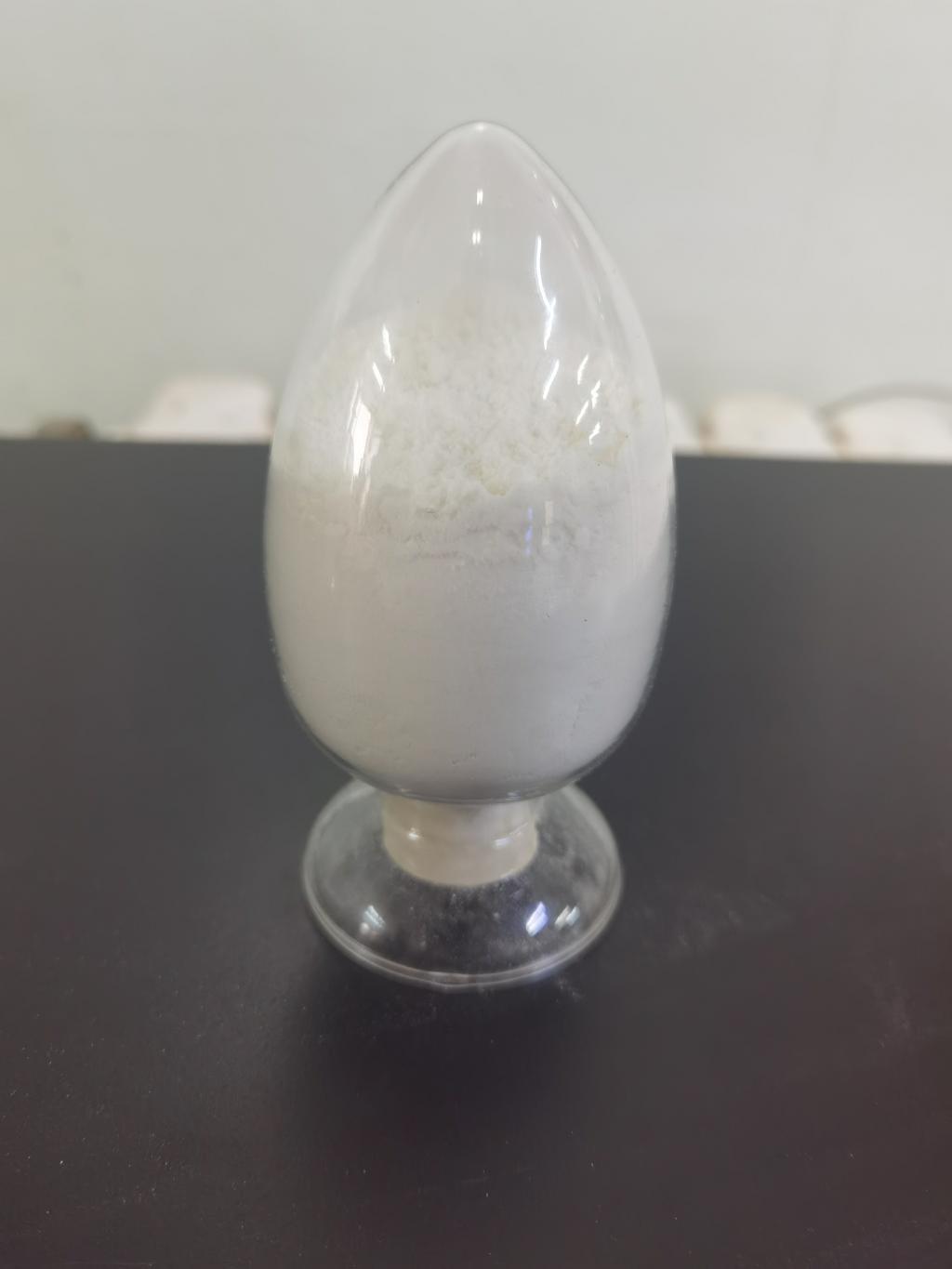Tel:+8618231198596

News
 CONTACT
CONTACT
 CONTACT
CONTACT
- Linkman:Linda Yao
- Tel: +8618231198596
- Email:linda.yao@dcpharma.cn
- Linkman:CHARLES.WANG
- Department:Overseas
- Tel: 0086 0311-85537378 0086 0311-85539701
News
Current Position:
Home >
News
>ε-Polylysine Hydrochloride: A Green Alternative in Antimicrobial Preservation.
ε-Polylysine Hydrochloride: A Green Alternative in Antimicrobial Preservation.
TIME:2024-06-03
Understanding ε-Polylysine Hydrochloride:
ε-Polylysine hydrochloride, also known as ε-Poly-L-lysine, is a natural antimicrobial peptide produced by certain strains of bacteria, particularly Streptomyces albulus. It consists of multiple lysine residues linked by peptide bonds, forming a linear polymer chain with a net positive charge. ε-Polylysine hydrochloride is water-soluble, biodegradable, and non-toxic, making it suitable for various applications in antimicrobial preservation. It has been approved as a food additive in many countries and is generally recognized as safe (GRAS) for human consumption.
Mechanisms of Action:
ε-Polylysine hydrochloride exhibits multiple mechanisms of action against microbial pathogens, making it an effective antimicrobial agent:
Disruption of Cell Membrane: ε-Polylysine hydrochloride interacts with the negatively charged bacterial cell membrane, leading to membrane disruption and permeabilization. This disrupts membrane integrity, causing leakage of cellular contents and eventual cell death. By targeting the cell membrane, ε-Polylysine hydrochloride effectively inhibits microbial growth and proliferation.
Inhibition of Protein Synthesis: ε-Polylysine hydrochloride can interfere with bacterial protein synthesis by binding to ribosomal subunits or inhibiting enzyme activity involved in protein synthesis. This disrupts bacterial metabolism and impairs cellular functions, leading to inhibition of microbial growth and replication.
Disruption of Biofilm Formation: ε-Polylysine hydrochloride can inhibit the formation of microbial biofilms by disrupting cell-to-cell communication, interfering with extracellular polymeric substance (EPS) production, and destabilizing the biofilm matrix. This prevents the attachment and colonization of microbial cells on surfaces, reducing the risk of biofilm-related infections and contamination.
Applications in Antimicrobial Preservation:
Food Industry: In the food industry, ε-Polylysine hydrochloride can be used as a natural preservative to inhibit microbial growth and extend the shelf life of various food products, including meat, poultry, seafood, dairy, and baked goods. It can be incorporated into food formulations or applied as a surface treatment to control spoilage organisms and foodborne pathogens, ensuring product safety and quality.
Healthcare Settings: In healthcare settings, ε-Polylysine hydrochloride can be used in medical devices, wound dressings, and topical formulations to prevent microbial colonization and infection. Its non-toxic and biocompatible nature makes it suitable for use in healthcare products designed for topical or mucosal application, such as oral care products, skin creams, and ointments.
Cosmetics and Personal Care Products: In cosmetics and personal care products, ε-Polylysine hydrochloride can be used as a natural preservative to inhibit microbial growth and extend product shelf life. It can be incorporated into formulations such as shampoos, lotions, and creams to prevent microbial contamination and maintain product stability and efficacy.
Water Treatment: In water treatment systems, ε-Polylysine hydrochloride can be used as a green biocide or biofilm inhibitor to control microbial growth and maintain water quality. It can be applied in cooling towers, pipelines, and filtration systems to prevent biofilm formation, reduce microbial fouling, and minimize the use of conventional chemical disinfectants.
Environmental Benefits:
ε-Polylysine hydrochloride offers several environmental benefits compared to conventional antimicrobial agents:
Biodegradability: ε-Polylysine hydrochloride is biodegradable, meaning it can be broken down into harmless by-products by microbial or enzymatic action in the environment. This reduces the risk of accumulation and persistence in the environment, minimizing environmental impact.
Low Toxicity: ε-Polylysine hydrochloride is non-toxic to humans and animals, posing minimal risk to human health and wildlife. Its low toxicity profile makes it a safer alternative to synthetic chemicals and antibiotics, which may have adverse effects on the environment and ecosystems.
Renewable Source: ε-Polylysine hydrochloride is derived from natural sources and can be produced through fermentation processes using renewable feedstocks. This reduces reliance on finite fossil resources and promotes sustainability in antimicrobial preservation.
Reduced Chemical Pollution: By replacing synthetic chemicals and antibiotics with ε-Polylysine hydrochloride, the use of environmentally harmful substances can be reduced, leading to decreased chemical pollution and ecological disruption in natural ecosystems.
Future Prospects and Challenges:
While ε-Polylysine hydrochloride holds great promise as a green alternative in antimicrobial preservation, several challenges must be addressed to realize its full potential:
Cost-Effectiveness: The production cost of ε-Polylysine hydrochloride may currently be higher than that of conventional antimicrobial agents. Research into cost-effective production methods and process optimization is needed to improve cost-effectiveness and market competitiveness.
Regulatory Approval: Regulatory approval for the use of ε-Polylysine hydrochloride in various applications may vary between countries and regions. Continued regulatory advocacy and compliance with safety and quality standards will be essential to facilitate its widespread adoption.
Education and Awareness: Increasing awareness and understanding of the environmental benefits of ε-Polylysine hydrochloride among consumers, industry stakeholders, and policymakers is crucial for driving demand and adoption.
Research and Development: Continued research and development efforts are needed to explore new applications, improve formulation technologies, and address emerging challenges related to ε-Polylysine hydrochloride production, stability, and efficacy.
Conclusion:
ε-Polylysine hydrochloride represents a green alternative in antimicrobial preservation, offering effective microbial control while minimizing environmental harm and promoting sustainability. Its natural origin, broad-spectrum antimicrobial activity, and biodegradability make it a promising solution for various industries, including food production, healthcare, cosmetics, and water treatment. By targeting multiple mechanisms of action, including cell membrane disruption, protein synthesis inhibition, and biofilm inhibition, ε-Polylysine hydrochloride effectively inhibits microbial growth and reduces the risk of contamination, infection, and biofilm formation.
As global concerns about environmental sustainability and antimicrobial resistance continue to grow, ε-Polylysine hydrochloride offers a viable alternative to conventional antimicrobial agents, aligning with the principles of green chemistry and sustainable development. However, addressing challenges related to cost-effectiveness, regulatory approval, education, and research will be essential for realizing the full potential of ε-Polylysine hydrochloride in antimicrobial preservation.
In conclusion, ε-Polylysine hydrochloride represents a green alternative in antimicrobial preservation, offering effective microbial control, minimal environmental impact, and long-term sustainability. Its versatile applications and environmental benefits make it a valuable tool for promoting public health, food safety, and environmental stewardship in the 21st century.
- Tel:+8618231198596
- Whatsapp:18231198596
- Chat With Skype







